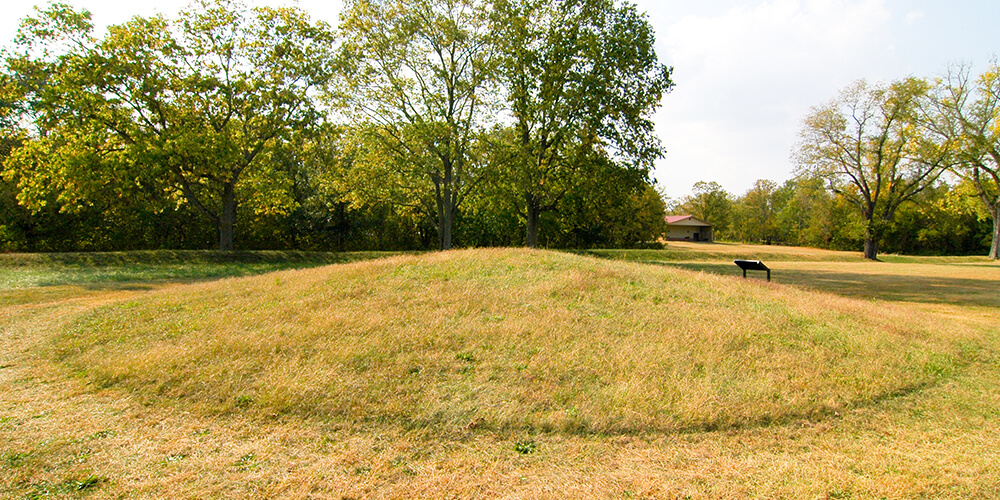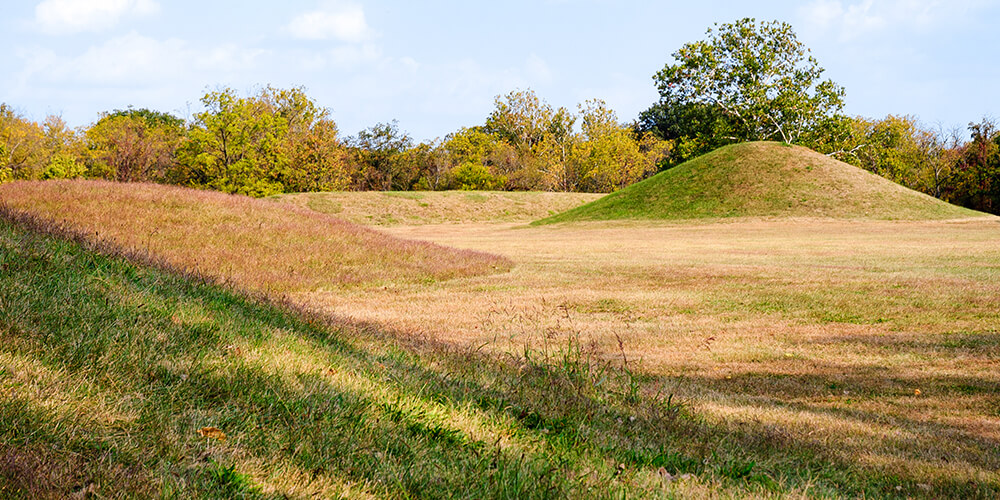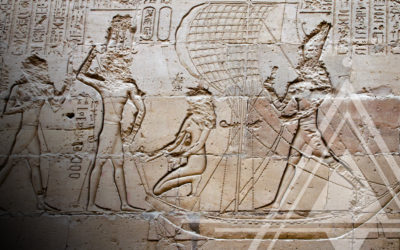Adam Oliver Stokes
Biblical Temples in North America
Apr 02
Adam Oliver Stokes
Tags
Introduction
One of the best examples of diffusionism (cross-cultural exchange across vast distances) is the clear influence of Semitic culture and practices on the ancient peoples of North America. Various scholars, from Frank Joseph to Richard Dewhurst, have discussed this phenomenon and even mainstream scholars have reluctantly admitted that there is evidence for it (though they have relegated their findings to the appendices of their textbooks). Semitic influence is arguably most prominent in the cultures of the Hopewell and Adena peoples-pre-Native American inhabitants of the continent who built up a significant empire in the Great Lakes region between 500 BCE and 500 CE.
Their most notable achievement was the creation of various ceremonial mounds and earthworks. In their excavations of these mounds, archaeologists have also found numerous inscriptions in a variety of Semitic languages ranging from Hebrew to Egyptian. In addition to the inscriptions, Hopewell society exhibits other signs of cultural affinity with the Near East as seen in their fertility figurines which share significant parallels with the Judean pillar figurines from the Iron II era.
This article will provide yet another example of possible Semitic influence on ancient American culture looking specifically at parallels between Hopewell and Israelite temples. In it, I will argue that the design and layout of Hopewell temples-specifically the side bed chamber-corresponds to the design and layout of pre-monarchic religious sites in Israel particularly the “temple” at Shiloh mentioned in the Deuteronomic history in the Old Testament (Joshua thru II Kings). I have put “temple” in quotes here because officially no temple existed in Israel until the monarchic period with Solomon’s temple in Jerusalem. Yet, as with many things in the Bible, the archaeological evidence as well as the alternate traditions within the biblical text itself suggest otherwise.

This temple, as Scheele presents it in his diagram (p. 40), is rectangular in its shape with two different compartments. The first compartment is the main temple with a doorway, posts and ritual fireplace. The second compartment consists of a bedroom or chamber that the shaman or priest would sleep in. In examining the diagram, my background in Near Eastern and biblical studies immediately noticed similarities between the Hopewell temple and structures described in the Bible. At the same time, the Hopewell temple does not correspond to the layout of the Jerusalem temple provided in either the Deuteronomic history or the book of Ezekiel. The most notable contrast, besides the dimensions (which were much larger for Solomon’s temple), is the lack of any secondary chamber for the priestly class. In fact, the biblical witness-both Old and New Testament-strongly implies that Levites (the Israelite priestly class) lived some distance from a temple in a separate spot of land allocated to them. This is seen in the following statement from Holiness Code in Leviticus:
And the cities of the Levites will be the houses of the cities of their inheritance. There will be eternal redemption for the Levites (Leviticus 25:32)

And the Levites will camp around the tent of witness and no wrath will be on the congregation of the sons of Israel. And the Levites will keep watch of the tent of witness (Numbers 1:53)
One last point of evidence for this position is found in the New Testament account of John the Baptist’s father, Zechariah, who is of priestly descent. According to the Gospel of Luke, Zechariah is appointed by lot to officiate in the temple (rebuilt in the time of Ezra). The text then notes:
And the days of his office were fulfilled and he went back to his house (Luke 1:23)

The Book of Mormon concludes with the destruction of these refugees, referred to as the Nephites, by their arch-enemies the Lamanites slightly before 500 CE. Many researches of ancient America have noted parallels between the description of the Nephites and the culture of the Hopewell in the mid-West as well as chronological congruence given that the Hopewell empire rose and fell between 500 BCE and 500 CE. Interestingly, in the Old Testament, the territory of Shiloh was apportioned to the tribe of Ephraim as seen in this statement from the book of Joshua which in the Vulgate reads:
And also the lot of the sons of Joseph fell from the Jordan against Jericho and its waters from the east, the desert which ascends from Jericho to the mountain of Bethel. And it goes out from Bethel to Luza and it crosses the end of Archi, Ataroth and it descends to the west next to the end of Jephleti up to the end of lower Beth-horon and Gazer. And its borders end by the great sea. And the sons of Joseph, Manasseh and Ephraim, possessed it. And the end of the sons of Ephraim’s [territory] by their relatives: and their possession against the east was Ataroth Addar up to upper Beth-horon. And the confines went out into the sea. But Machmethath looks to the north and its end point goes around against the east into Thanath-Shilo.
In closing, this article has noted a parallel between Hopewell temple sites and ancient Israelite temple sites as possible evidence for diffusionism between the Old World and the New. While initially the Hopewell mound temple bears little resemblance to the Jerusalem temple, it does conform very well to the structure and layout of an older temple tradition in Shiloh which, like the Hopewell temples, contained a sleeping chamber and sacred fire area. Given the other Semitic features of Hopewell culture the layout of the Hopewell temples is strong evidence for the influence of ancient Israelites on the culture of pre-Columbian America.
References
- See, F. Joseph, The Lost History of Ancient America (Wayne, NJ: New Page, 2017); F. Joseph, The Lost Worlds of Ancient America (Wayne, NJ: New Page, 2017); R. Dewhurst, The Ancient Giants Who Ruled America (Rochester, VT: Inner Traditions, 2014).
- These include the Newark holiness stones found at the Newark earthworks in Ohio, the Los Lunas Decalogue Stone in New Mexico and the Bat Creek Stone. Skeptics often assume that these inscriptions are frauds but the Hebrew used (paleo-Semitic lacking internal matres) suggests otherwise.
- See, A. Stokes, “Judean Pillar Figurines in mid-West America,” Ancient American 23/124 (Sept. 2019)
- See, A. Collins and G. Little, Denisovan Origins: Hybrid Humans, Gobekli Tepe, and the Genesis of Giants in Ancient America (Rochester, VT: Bear and Company, 2019); M. Lynott, Hopewell Ceremonial Landscapes of Ohio (Oxford: Oxbow Books, 2015)
- W.E. Scheele, The Mound Builders (Cleveland, OH: World Publishing Company, 1960)
- See, in the Old Testament, 1 Kings 6; Ezekiel 40
- All translations of Latin and Hebrew are mine unless noted as otherwise
- The legal material in Leviticus and Numbers is commonly attributed by biblical scholars to the Priestly or P source which was compiled in the decades of Nebuchadnezzar’s conquest of Jerusalem in 586 BCE.
- L.W. Batten, “The Sanctuary of Shiloh and Samuel’s Sleeping Therein,” Journal of Biblical Literature 19/1 (1900), 29-33.

About the Guest
Join Our Mailing List
Spam sucks. We take your privacy seriously and we will never spam your inbox. You can opt out at any time.



